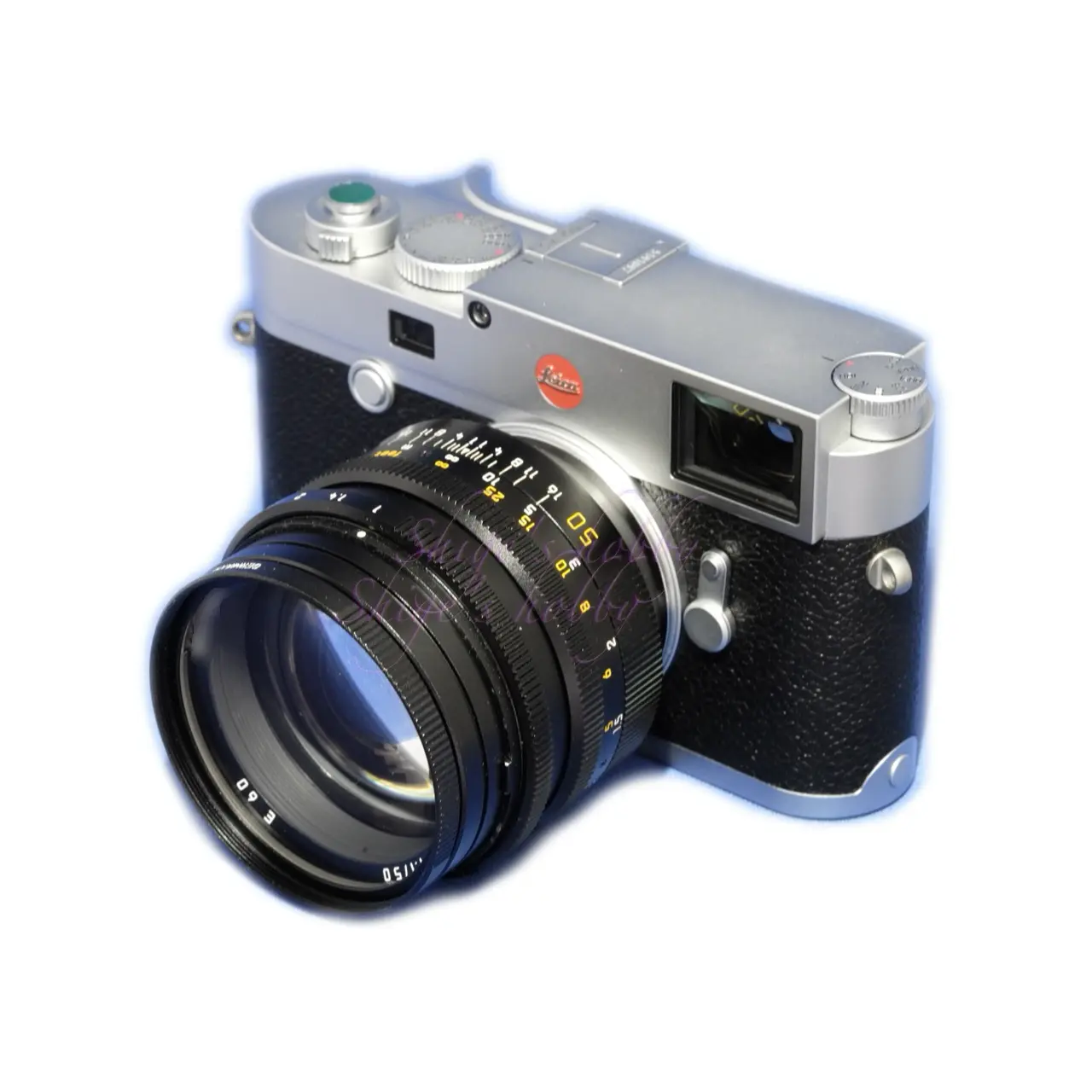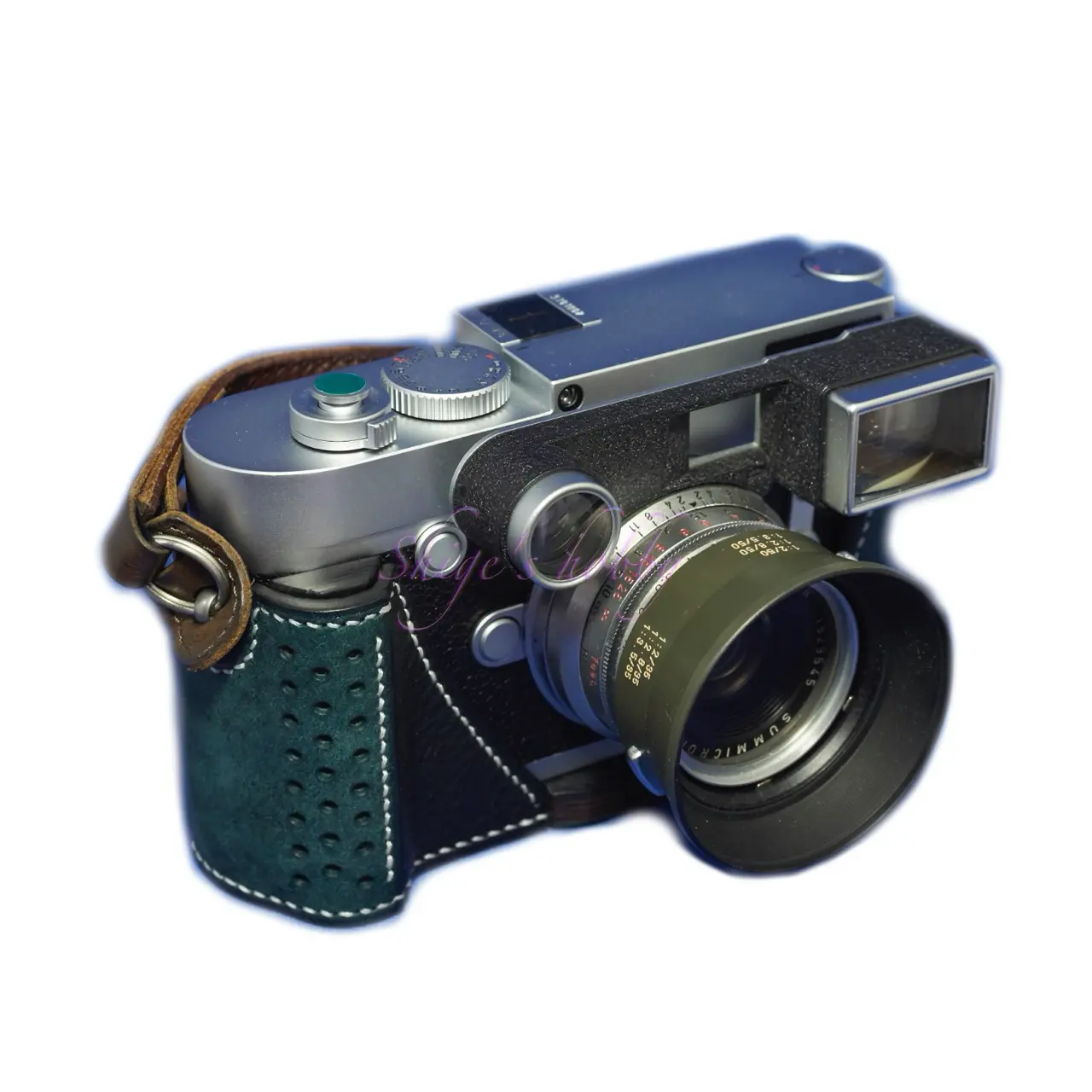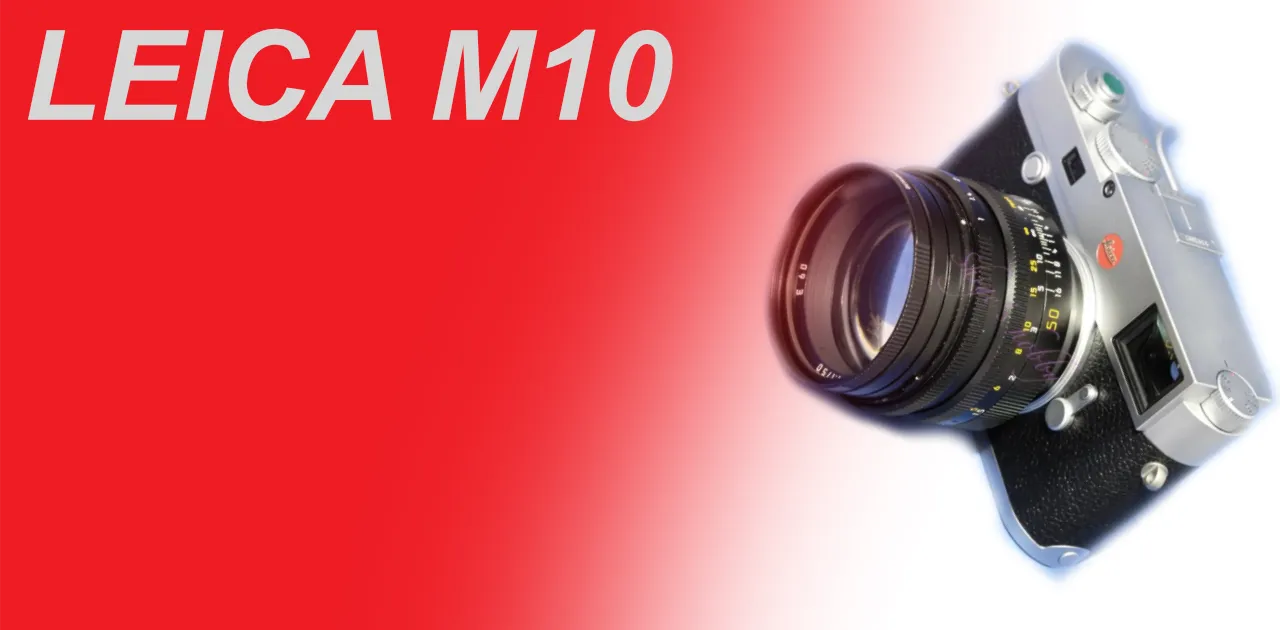Last updated on 2025-10-26
A review and photo examples using the LEICA M10 with genuine Leica M-mount lenses.
- Please see the disclaimer regarding advertising here.
- Italicized links in the text are advertisement links that take you to other sites.
Table of contents
Gallery
The following lenses were used to take the example photos:
- LEICA SUMMILUX M 50mm F1.4 ASPH.
- LEICA SUMMICRON M 35mm F2 with Goggle
- LEICA ELMARIT M 28mm 1st
- LEICA SUMMILUX M 35mm ASPH.
- LEICA NOCTILUX 50mm F1 3rd
Review


1.Overview
The LEICA M10 is a camera that inherits the official number designation of the Leica M released in 2017. The type designation remains, and it is typ 3656.
Due to the nature of the Leica M series cameras, the shooting functions have not evolved significantly, and the main improvements have been brushing up the details.
A major change from the previous model, the M typ240, is that the thickness of the top cover of the body has become the same as that of film cameras such as the M6, and the weight of the camera has become slightly lighter. However, the negative aspect unique to digital cameras remains that the LCD display part is thicker than that of a film camera.
The number of pixels of the image sensor, which is the heart of the camera, is 24 million pixels, which is the same as the M typ240.
However, since Leica has announced that it is an improved new sensor, there is no doubt that the sensor has been changed.
One part of this is that the standard ISO sensitivity for shooting has been changed from ISO 200 of the LEICA M typ240 to ISO 100 of the LEICA M10.
Leica was open about sensor information up until the M typ240. However, for sensors installed in cameras from the M10 onwards, the names of companies involved in design and manufacturing have ceased to be disclosed.
The video recording function, which was said to be unnecessary in the M typ240, has been abolished, but the live view function remains, and in addition to using the rear LCD, a 2.4 million dot electronic viewfinder called VISOFLEX (18767, typ020) is provided. This VISOFLEX can also be used with the Leica T series and the Leica X, a camera with a built-in lens. The M10 can also use the 3.59 million dot VISOFLEX2, which was released at the same time as the M11. In order to use this, a firmware update is required, and when using it, it is necessary to accept the limitation that only the central 2.4 million dots of the VISOFLEX2 can be used.
The finder magnification, which is an important specification of the rangefinder section, is 0.73x, which is the same as the 0.72x of the film M6. The bright frame LED finder method is still used. The magnification has increased slightly from 0.68x of the previous model M typ240 to 0.73x, but there is no significant change in the viewfinder compared to the M typ240.
The LEICA M10 is a camera that focuses on making its appearance closer to that of a film camera, so there is a compromise on battery capacity.
The M10 uses a thin battery called BP-SCL5, which has a capacity of 1100 mAh and a voltage of 7.4V, which is 2/3 of the capacity of the LEICA M typ240 and LEICA M11, which have a capacity of 1800mAh and a voltage of 7.4V. For this reason, even if you do not use live view, the number of shots you can take is less than that of the M typ240 and M11.
2.Usability
As long as you use the LEICA M10 at low ISO, you won’t feel any difference from the LEICA M Typ240.
The improvement in use of the LEICA M10 is the addition of an ISO change dial to the top left shoulder of the camera.
I personally appreciate the exposure compensation dial, which is a feature of Japanese cameras, but I understand that Leicas have physical aperture rings on their lenses, so you have to adjust the exposure with the shutter dial.
A mode often does not reflect the photographer’s intentions, so I often rely on the exposure compensation dial, so I feel that manually setting the aperture and shutter speed to capture the light I like is the most effective way to use the M-type Leica.
When I looked at the images of the SUMMILUX M 50mm ASPH. to create this page, I found that if you use a lens up to F1.4, the focus accuracy is sufficient and you can take pictures without any problems. However, it was difficult to reliably focus with the double image matching on lenses with an even larger aperture of F1, such as the NOCTILUX and Ms-optics ISM-GA, possibly due to the photographer’s lack of training.
In terms of focusing speed, the double image matching method of the rangefinder allows for quick focusing depending on the photographer’s skill. However, when precise focus is required, the focus accuracy of the double image matching method is not sufficient. Analog techniques are required to grasp the camera’s quirks and make subtle adjustments on the human side.
Of course, I purchased the VISOFLEX, which can be retrofitted to the M10. However, when the VISOFLEX is attached to the LEICA M10, the style of the camera is worsened, and when the VISOFLEX is used as a retrofit, it has a negative effect on the camera’s response, and the shooting sensation is different from when using a rangefinder, which was unnatural. For this reason, I rarely used the VISOFLEX on the M10.
The LEICA M10 continues the LEICA M8’s approach to the use of the bottom cover for storing the battery, and the camera can now operate without the bottom cover. For this reason, some leather cases have an openable door at the bottom of the case, assuming that the bottom cover will not be attached, so that the battery can be replaced without removing the bottom cover.
3.Summary
In conclusion, to sum up the LEICA M10, the number of pixels is sufficient as long as the current superimposition method is used. If the high pixel count and superimposition method are to be continued, a technological breakthrough will be necessary to improve the focusing accuracy.
There is room for improvement in the battery, and the successor M11 has an increased capacity.
As for the body size, we are waiting for the appearance of a camera that is the same size and thickness as the Form M Leica, either by eliminating the thickness of the LCD display or by removing the LCD display.
The LEICA M10 is a camera that made me put an end to using rangefinder digital cameras, and it has left a strong impression on me.
Specifications, considerations, etc.
The LEICA M11 furthers this philosophy by eliminating the bottom cover, a tradition dating back to the film era. The bottom cover, considered a distinctive Leica feature, was finally discontinued 11 years after the release of the LEICA M8 in 2006.
While Leica’s insistence on this gimmick seems to be a result of their commitment, it would not have been a problem if they had done away with it sooner.
I felt something was off when using the M10 in conjunction with a camera equipped with an EVF, and I’ve outlined the four reasons for this.
- Advantages of an EVF
- Checking the focus position using the EVF’s focus magnification function allows you to see how the focal plane changes with a large-aperture lens with even the slightest rotation of the focus ring. The magnification position can also be freely selected, making it unlikely to cause focus errors, barring camera shake.
- External EVF
- The Digital M can be equipped with an external EVF. However, compared to cameras with integrated EVFs, the design lacks consistency and can be a nuisance when storing the camera in a camera bag.
- Rangefinder Accuracy
- Since it’s an extension of the technology used since the M3, there are no functional advancements. It’s difficult to achieve the same focusing accuracy as an EVF with double-image overlap.
- High Price
- The cost of incorporating a rangefinder mechanism cannot be reduced, making it more expensive than the SL series, Hasselblad, and Fujifilm medium-format digital cameras with EVFs.
| Camera name | M10 | M10-R | M11 |
| Camera effective pixels | 24MP | 41MP | 60MP |
| Recording pixel count | 5,976 x 3,992 | 7,864 × 5,200 | 9,528 x 6,328 |
| Image sensor type | CMOS | CMOS | CMOS |
| Sensor size | 35mm Full size 35.8 x 23.9mm | 35mm Full size 35.8 x 23.9mm | 35mm Full size 35.8 x 23.9mm |
| Minimum Sensitivity | 100 | 100 | 64 |
| Rear LCD size | 3.0 1,040,000 dots | 3.0 1,040,000 dots | 2.95 2,330,000 dots |
| LCD cover glass | Normal Glass | Normal Glass | Gorilla® Glass |
| Viewfinder Magnification | 0.73 | 0.73 | 0.73 |
| EVF | VISOFLEX VISOFLEX2*1 | VISOFLEX VISOFLEX2*1 | VISOFLEX2 |
| Max Shutter speed | 1/4000 | 1/4000 | 1/4000 |
| Built-in memory | none | none | 64GB |
| Battery | BP-SCL5 *2 | BP-SCL5 *2 | BP-SCL7 *2 |
| Touch screen | none | exist | exist |
| Recorded media | SD,SDHC,SDXC | SD,SDHC,SDXC | SD,SDHC,SDXC |
| Release date | 2017.01.28 | 2020.7.24 | 2022.1.21 |
| Size | 139×80×38.5 | 139×80×38.6 | 139×80×38.7 |
| Weight (g) (including battery) Black | 660 | 660 | 530 |
| Weight (g) (including battery) Silver | 660 | 660 | 640 |
Options
- LEICA M10 hand grip (replace bottom cover)
- VISOFLEX / VISOFLEX2
- thumbs up
Reference links
- Wikipedia’s description page for LEICA M10
- Leica Official Web-site for LEICA M type.
- LEICA M system・Official page
- LEICA M10-R・Official page
- LEICA M11・Official page
- LEICA SUMMILUX M 50mm F1.4 ASPH.・Shige’s hobby
- LEICA SUMMICRON M 35mm F2 with Goggle ・Shige’s hobby
- LEICA ELMARIT M 28mm 1st ・Shige’s hobby
- LEICA SUMMILUX M 35mm ASPH. ・Shige’s hobby
- LEICA NOCTILUX 50mm F1 3rd・Shige’s hobby
- LEICA M typ240・Shige’s hobby
Affiliate links
- Leica Lens・Ads by Amazon
- Leica Books・Ads by Amazon

Amazon Prime Sale
Update history
- 2025.4.28
- 2024.8.6
- 2024.04.07



Be First to Comment